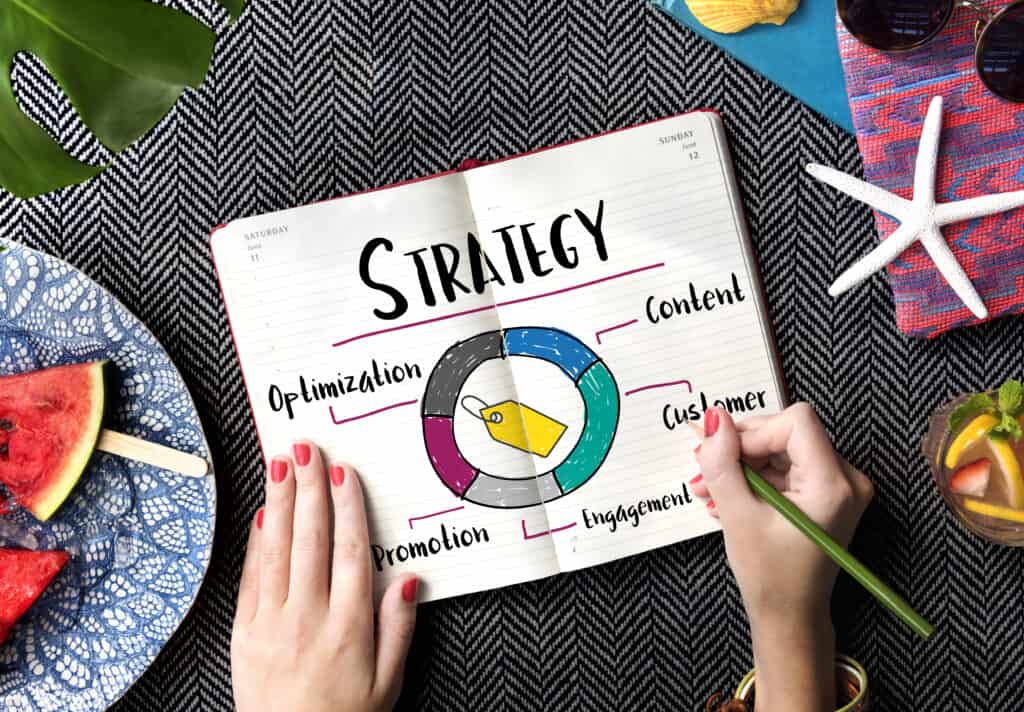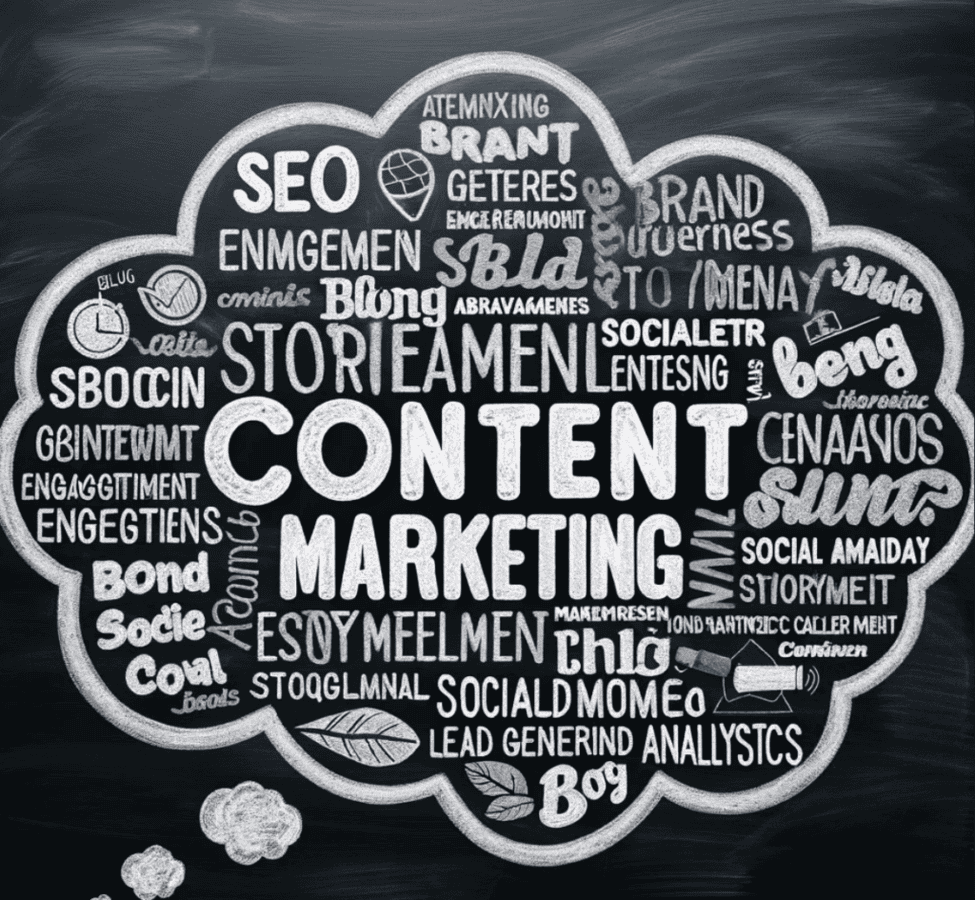Inbound lead generation is the lifeblood of modern marketing strategies. In a world where customers are increasingly seeking value and personalization, businesses must adapt to meet these demands.
This article delves into the intricacies of inbound lead generation, highlighting why it surpasses traditional outbound methods.
We’ll explore what makes inbound leads so valuable, how to craft a winning strategy, and provide real-world examples to inspire your efforts.
Additionally, we’ll examine the essential tools needed for successful lead generation, compare inbound versus outbound techniques, and discuss best practices for processing and nurturing leads.
Whether you’re new to digital marketing or looking to refine your approach, this guide offers comprehensive insights to boost your lead generation efforts. Prepare to transform your marketing strategy and attract high-quality leads that convert.
Understanding Inbound Lead Generation

Inbound lead generation involves attracting potential customers to your business through valuable content and experiences tailored to their needs. Unlike outbound marketing, which interrupts prospects with ads and cold calls, inbound marketing draws customers in organically.
The benefits are substantial: it builds trust, nurtures long-term relationships, and converts leads into loyal customers. Businesses should approach inbound lead generation by understanding customer psychology.
Today’s consumers are savvy—they seek out information that solves their problems and fulfills their needs. They are attracted to brands that provide educational content, engage through social media, and offer seamless user experiences.
To capture inbound leads, businesses must focus on creating high-quality, relevant content that addresses the pain points of their target audience. This includes blog posts, eBooks, webinars, and social media engagement.
By offering solutions and establishing authority in your industry, you can naturally draw in leads who are already interested in what you have to offer.
Remember, the key is to build trust and provide value, ensuring that when customers are ready to make a purchase, your business is their top choice.
Inbound Marketing vs. Outbound Marketing

Inbound Marketing and Outbound Marketing are two distinct approaches to lead generation, each with its own characteristics and strategies.
Inbound Marketing focuses on attracting customers through valuable content and interactions that are relevant and helpful. It involves creating quality content that pulls people toward your company and product, where they naturally want to be. By aligning the content you publish with your customer’s interests, you naturally attract inbound traffic that you can then convert, close, and delight over time.
Outbound Marketing, on the other hand, relies on pushing products or services to consumers through direct advertising. This traditional form of marketing includes tactics such as TV and radio ads, print advertisements, cold calling, and direct mail. It is often seen as intrusive and interruptive, as it seeks out customers rather than attracting them.
Key Characteristics:
- Content Creation vs. Advertisement: Inbound marketing relies on creating valuable content that educates and engages the audience, while outbound marketing focuses on placing ads in front of potential customers.
- Customer Engagement: Inbound marketing is about building relationships and trust over time. Outbound marketing often involves one-way communication.
- Cost Efficiency: Inbound marketing can be more cost-effective as it focuses on organic reach through SEO and content marketing. Outbound marketing often requires a significant budget for ad placements and campaigns.
- Audience Targeting: Inbound marketing targets specific audiences based on their interests and behaviors. Outbound marketing uses a broader approach to reach as many people as possible.
A comparison of Inbound and Outbound marketing
| Aspect | Inbound Marketing | Outbound Marketing |
|---|---|---|
| Method | Content creation, SEO, social media | TV/radio ads, print ads, cold calling |
| Customer Interaction | Two-way communication, engagement | One-way communication, interruption |
| Cost Efficiency | Generally more cost-effective | Often requires larger budgets |
| Targeting | Specific, based on interests and behaviors | Broad, less targeted |
| Goal | Attract and nurture leads | Push products/services to consumers |
| Strategy | Long-term relationship building | Immediate sales-focused |
By understanding these key differences, businesses can choose the approach that best fits their goals and customer preferences.
What is Lead Generation in Digital Marketing?

Lead generation in digital marketing refers to the process of attracting and converting strangers and prospects into someone who has indicated interest in your company’s product or service. This can be done through various methods and channels, each tailored to attract potential leads in different ways.
At its core, lead generation involves creating awareness and interest around your offerings. This starts with understanding your target audience and creating valuable content that resonates with them.
Common sources for lead generation include:
- Website Content: Blogs, articles, and case studies that educate and inform.
- Social Media: Engaging posts, ads, and interactions on platforms like Facebook, LinkedIn, and Twitter.
- SEO: Optimizing your website and content to rank higher in search engine results.
- Email Marketing: Sending targeted emails to nurture relationships with potential leads.
- Landing Pages: Dedicated pages designed to capture lead information through forms.
- PPC Advertising: Paid ads on platforms like Google AdWords and social media to drive traffic to your website.
Advanced lead generation strategies dive deeper into targeting and personalization. Techniques include:
- Marketing Automation: Using tools to automate repetitive tasks, segment audiences, and personalize communications at scale.
- Content Marketing: Creating high-value content such as eBooks, whitepapers, webinars, and interactive content to capture leads.
- Account-Based Marketing (ABM): Targeting specific high-value accounts with personalized campaigns.
- Retargeting: Using cookies to track visitors and serve them relevant ads based on their previous interactions with your site.
- CRM Integration: Integrating lead generation efforts with Customer Relationship Management (CRM) systems to streamline follow-ups and improve sales coordination.
- Advanced Analytics: Using data analytics to track lead behavior, measure campaign effectiveness, and optimize strategies in real-time.
Inbound Lead Generation Sources:
- Blogs: Providing valuable, SEO-optimized content to attract organic traffic.
- Social Media Engagement: Building relationships and driving traffic through social platforms.
- SEO: Ensuring your content is discoverable via search engines.
- Webinars: Offering free educational webinars to attract leads.
- Lead Magnets: Providing free resources like eBooks or templates in exchange for contact information.
Table for Ready Reference:
| Lead Generation Source | Description | Inbound Focus |
|---|---|---|
| Website Content | Blogs, articles, case studies | High |
| Social Media | Posts, ads, interactions on social platforms | High |
| SEO | Optimizing content for search engines | High |
| Email Marketing | Targeted email campaigns | Medium |
| Landing Pages | Dedicated pages for capturing lead information | High |
| PPC Advertising | Paid ads to drive website traffic | Medium |
| Marketing Automation | Tools for automating and personalizing marketing efforts | High |
| Content Marketing | High-value content like eBooks, whitepapers, webinars | High |
| Account-Based Marketing (ABM) | Targeted campaigns for specific high-value accounts | High |
| Retargeting | Ads based on previous site interactions | Medium |
| CRM Integration | Streamlining lead management and follow-ups | Medium |
| Advanced Analytics | Data-driven optimization of lead generation strategies | Medium |
Understanding the broad spectrum of lead generation techniques and focusing on those that align with inbound marketing principles will help businesses attract and convert high-quality leads efficiently.
Inbound Leads vs Outbound Leads
Inbound Leads and Outbound Leads represent two different approaches to attracting potential customers. Here is an in-depth comparison across several parameters, including sources, lead intent, costs, conversion efficiency, and more.
Comparison of lead sources
Inbound leads are generated through content and experiences that attract potential customers organically. Outbound leads are obtained by proactively reaching out to potential customers through various direct methods.
| Parameter | Inbound Leads | Outbound Leads |
|---|---|---|
| Sources | Blog posts, SEO, social media, webinars, eBooks, whitepapers | Cold calling, email blasts, TV/radio ads, direct mail, trade shows |
Lead Intent
Inbound leads typically have higher intent because they actively seek out information and engage with your content. Outbound leads often have lower intent because they are approached without prior interest.
| Parameter | Inbound Leads | Outbound Leads |
|---|---|---|
| Lead Intent | High – Actively searching for solutions | Low – Passive recipients of information |
| Engagement | Higher – Leads engage with content | Lower – Leads are often unaware of the need |
| Conversion Likelihood | Higher – More likely to convert | Lower – Less likely to convert |
Costs of Leads across both
Inbound lead generation is generally more cost-effective over time due to the lasting value of content, whereas outbound lead generation tends to incur higher ongoing costs.
| Parameter | Inbound Leads | Outbound Leads |
|---|---|---|
| Initial Investment | Moderate – Content creation costs | High – Ad placements, direct mail costs |
| Ongoing Costs | Lower – Content continues to generate leads | Higher – Continuous need for ad placements |
| Cost per Lead | $20 to $400 per lead | $50 to $700 per lead |
Conversion Efficiency
Inbound leads often result in higher conversion rates because the leads are pre-qualified through content interaction. Outbound leads have lower conversion rates due to the lack of initial interest.
| Parameter | Inbound Leads | Outbound Leads |
|---|---|---|
| Conversion Rate | 14.6% for inbound leads | 1.7% for outbound leads |
| Lead Quality | Higher – Leads are pre-qualified by content | Lower – Leads are cold and require more nurturing |
Lead Nurturing
Nurturing inbound leads involves providing valuable content to address their pain points, while outbound lead nurturing requires more personalized outreach and follow-ups.
| Parameter | Inbound Leads | Outbound Leads |
|---|---|---|
| Lead Nurturing | Content-based – Blogs, whitepapers, webinars | Personalized – Follow-up calls, targeted emails |
| Engagement | Higher – Leads engage with educational content | Lower – Leads need convincing through personal outreach |
Speed and Timing
Outbound lead generation can generate leads quickly by reaching out to many potential customers in a short time. Inbound lead generation is a longer process but results in more sustainable lead flow.
| Parameter | Inbound Leads | Outbound Leads |
|---|---|---|
| Lead Generation Speed | Slower – Requires time to build content and attract leads | Faster – Direct outreach to potential customers |
| Timing Control | Leads come in as they find and engage with content | Sales team controls when to reach out to leads |
Scalability
Inbound marketing strategies can be easily scaled by creating more content and optimizing existing ones. Outbound marketing scalability is limited by the number of contacts a sales team can manage.
| Parameter | Inbound Leads | Outbound Leads |
|---|---|---|
| Scalability | High – More content can attract more leads | Limited – Depends on sales team capacity |
| Sustainability | High – Content continues to attract leads over time | Low – Continuous effort required to generate leads |
Detailed Tables that compare key aspects of inbound and outbound lead generation
Costs Comparison
| Lead Generation Method | Cost per Lead | Initial Investment | Ongoing Costs |
|---|---|---|---|
| Inbound Marketing | $20 to $400 | Content creation, SEO tools | Lower – Content maintains value |
| Outbound Marketing | $50 to $700 | Ad placements, cold call setup | Higher – Continuous ad spend |
Conversion Rates Comparison
| Lead Generation Method | Conversion Rate | Lead Quality | Nurturing Required |
|---|---|---|---|
| Inbound Marketing | 14.6% | High – Pre-qualified by content | Moderate – Content-focused |
| Outbound Marketing | 1.7% | Lower – Cold leads | High – Personal follow-up |
Lead Nurturing Comparison
| Lead Generation Method | Nurturing Strategy | Engagement Level | Tools Used |
|---|---|---|---|
| Inbound Marketing | Educational content – Blogs, webinars | Higher – Leads seek out content | CRM, marketing automation tools |
| Outbound Marketing | Personalized follow-ups – Calls, emails | Lower – Leads need convincing | Email marketing, direct calls |
Both inbound and outbound lead generation strategies have their unique benefits and challenges.
Inbound marketing excels in creating long-term value and high-quality leads at a lower cost, while outbound marketing can quickly generate leads but at a higher cost and often lower quality.
By understanding these differences, businesses can tailor their lead generation strategies to best suit their goals and resources, effectively balancing immediate needs with sustainable growth.
Developing an Inbound Lead Generation Strategy

Lets look at an inbound lead generation strategy that I had to come up for a SaaS Accounting software product. Lets look at the steps that I followed and implemented.
Objective of the strategy: To develop an effective inbound lead generation strategy that attracts, engages, and converts potential customers for our accounting SaaS product.
This plan outlines the sources of leads, timeline, costs, and expected outcomes to secure leadership approval.
Sources of Leads for an inbound marketing strategy
1. Content Marketing:
- Blogs: Creating high-quality blog posts on topics relevant to accounting and finance to drive organic traffic. Each blog post should be optimized for SEO to ensure it ranks well on search engines.
- eBooks/Whitepapers: Offering in-depth guides and whitepapers on complex accounting issues. These will be gated content, requiring users to provide their contact information to download.
2. SEO (Search Engine Optimization):
- On-Page SEO: Optimizing our website and content for search engines. This includes using relevant keywords, meta tags, and ensuring mobile-friendliness.
- Off-Page SEO: Building high-quality backlinks through guest blogging and partnerships with industry websites.
3. Social Media Marketing:
- LinkedIn: Regularly posting updates, articles, and engaging with industry groups to establish thought leadership and drive traffic to our site.
- Facebook/Twitter: Sharing blog posts, industry news, and interacting with followers to increase brand visibility and engagement.
4. Webinars and Online Events:
- Hosting webinars on accounting best practices, updates in tax laws, and how to use our SaaS product to streamline accounting processes. Webinars will require registration, capturing lead information.
5. Email Marketing:
- Newsletter: Sending regular newsletters with the latest blog posts, industry news, and product updates to nurture leads.
- Drip Campaigns: Implementing automated email sequences to nurture leads through the sales funnel.
| Lead Source | Description | Frequency | Expected Start Time | Upfront Cost |
|---|---|---|---|---|
| Blogs | SEO-optimized posts on relevant topics | 2-3 per week | Leads within 3-6 months | $500 per post |
| eBooks/Whitepapers | In-depth, gated content on complex accounting issues | 1 per quarter | Leads within 3-6 months | $2,000 per eBook/whitepaper |
| SEO | On-page and off-page optimization | Continuous | Improved traffic in 3-6 months | $3,000 initial setup |
| Social Media | Regular posts and engagement on LinkedIn, Facebook, Twitter | Daily | Immediate engagement | $1,000 per month for tools |
| Webinars | Online events on relevant topics | Monthly | Leads within 1-3 months | $1,500 per webinar |
| Email Marketing | Newsletters and drip campaigns | Weekly for newsletters | Leads within 1-3 months | $200 per month for tools |
Timeline and Costs for the strategy
The strategy will take approximately 3-6 months to start generating a steady flow of leads. Here’s a breakdown of the initial timeline and costs:
Month 1:
- Setup Phase: Establish a content calendar, hire content creators, and setup SEO tools.
- Costs: $5,000 (SEO setup, initial blog posts, and content creation tools)
Month 2-3:
- Content Creation and Distribution: Begin publishing blogs, creating eBooks, optimizing the website, and posting on social media.
- Costs: $6,000 (content creation, social media tools, and webinars)
Month 4-6:
- Lead Generation and Nurturing: Launch email campaigns, host webinars, and continue content creation and SEO efforts.
- Costs: $5,000 (email marketing tools, additional content creation)
| Phase | Activities | Timeframe | Cost |
|---|---|---|---|
| Setup | Establish calendar, hire creators, SEO setup | Month 1 | $5,000 |
| Content Creation | Publish blogs, create eBooks, optimize website, social media | Month 2-3 | $6,000 |
| Lead Nurturing | Email campaigns, webinars, continued content/SEO efforts | Month 4-6 | $5,000 |
Expected Outcomes from this strategy
By implementing this strategy, we aim to achieve the following:
- Increased Website Traffic: A 30% increase in organic traffic through SEO and content marketing.
- Higher Engagement: Increased engagement on social media and through webinars.
- Lead Generation: Generate approximately 200-300 qualified leads per month by the end of 6 months.
- Cost Efficiency: Lower cost per lead compared to outbound marketing strategies.
This comprehensive inbound lead generation strategy leverages multiple channels and tactics to attract, engage, and convert high-quality leads for our accounting SaaS product.
The upfront costs and effort will be offset by the long-term benefits of sustained lead generation and improved brand authority.
Examples of Inbound Lead Generation

LEGO, the iconic toy company, is a prime example of successful inbound lead generation.
Their innovative and engaging approach has significantly boosted their brand presence and attracted a vast number of leads through various inbound marketing strategies.
Overview: LEGO faced the challenge of staying relevant in a rapidly changing digital landscape. They aimed to attract new customers, particularly children and their parents, while retaining the loyalty of existing customers.
To achieve this, LEGO focused on creating a strong online presence through engaging content and interactive experiences.
Strategies Implemented:
- Content Marketing:
- YouTube Channel: LEGO leveraged YouTube to create engaging content such as animated series, tutorials, and user-generated content. Their YouTube channel became a hub for fans to interact with the brand and share their creations.
- LEGO Ideas Platform: This platform allows fans to submit their own LEGO set ideas. Successful submissions can become official LEGO products, fostering a community of engaged and creative users.
- SEO Optimization:
- Keyword-Rich Content: LEGO optimized their website and blog content for search engines. They focused on keywords related to popular LEGO themes, new releases, and creative building ideas.
- Interactive Website Features: LEGO’s website includes features like a product catalog, building instructions, and interactive games, all optimized for search engine visibility.
- Social Media Engagement:
- Instagram and Facebook: LEGO uses social media to share user-generated content, new product announcements, and interactive challenges. They encourage fans to share their creations using specific hashtags, creating a community-driven content stream.
- TikTok Campaigns: LEGO has also embraced TikTok to reach a younger audience with fun, short-form videos showcasing new sets and building challenges.
- Email Marketing:
- Personalized Newsletters: LEGO sends out regular newsletters personalized based on user preferences and past purchases. These emails include building tips, new product announcements, and exclusive offers.
- Drip Campaigns: Automated email sequences are used to nurture new leads, providing them with relevant content and offers to keep them engaged.
- Interactive Content and Gamification:
- LEGO Life App: This app provides a safe social network for kids to share their creations, participate in challenges, and interact with other LEGO fans.
- Online Games and Challenges: LEGO’s website features various games and building challenges that encourage user participation and content sharing.
Results: LEGO’s inbound marketing efforts have paid off significantly. Their YouTube channel has millions of subscribers, and the LEGO Ideas platform has seen numerous fan-submitted sets become bestsellers.
The company’s website traffic increased, with many visitors converting into loyal customers. Social media engagement has soared, with user-generated content and hashtag campaigns driving brand visibility and customer interaction.
Key Metrics:
- YouTube Subscribers: Over 10 million
- LEGO Ideas Submissions: Thousands of fan ideas, with many becoming official products
- Website Traffic Increase: Significant rise due to SEO and interactive content
- Social Media Engagement: High levels of user-generated content and interaction
LEGO’s example demonstrates the power of a well-rounded inbound lead generation strategy. By focusing on content creation, SEO, social media engagement, and interactive experiences, LEGO has successfully attracted and converted leads, fostering a vibrant and loyal customer community.
This case study highlights the effectiveness of inbound marketing in building a strong brand presence and driving business growth.
Lead Generation Tools for Inbound Marketing

Effective inbound lead generation requires a suite of tools that can help attract, engage, and convert leads through various channels.
Here is a comprehensive view of the capabilities needed in lead generation tools, along with examples of tools that offer these capabilities and why they are essential.
| Capability | Why Needed | Examples of Tools |
|---|---|---|
| Content Creation | High-quality content attracts and engages potential leads, establishing authority and trust. | HubSpot, WordPress, Contentful |
| SEO Optimization | Improves visibility in search engine results, driving organic traffic to the website. | SEMrush, Ahrefs, Moz |
| Email Marketing | Nurtures leads through personalized communication, converting them into customers. | Mailchimp, HubSpot, ActiveCampaign |
| Social Media Management | Engages with a broad audience, driving traffic and generating leads through social media platforms. | Hootsuite, Buffer, Sprout Social |
| Analytics and Reporting | Provides insights into marketing performance, helping optimize strategies for better results. | Google Analytics, HubSpot, SEMrush |
| Landing Page and Form Builders | Captures lead information through high-converting landing pages and forms. | Unbounce, Leadpages, Instapage |
| Marketing Automation | Automates repetitive tasks and workflows, ensuring consistent lead nurturing and follow-up. | HubSpot, Marketo, Pardot |
How should you Process Inbound Leads?
Processing inbound leads effectively is crucial to converting them into customers. The best practices for handling inbound leads include prompt response, effective nurturing, and strategic engagement campaigns.
Here’s a detailed guide on how to handle inbound leads from initial contact to conversion:
Best Practices for Handling Inbound Leads
- Immediate Response:
- Why Needed: Speed is critical. Leads that are contacted within five minutes of their initial inquiry are nine times more likely to convert.
- Action Steps:
- Use automated email responders to acknowledge receipt of their inquiry.
- Have a sales representative follow up as soon as possible to address their needs and questions.
- Lead Qualification:
- Why Needed: Not all leads are equal. Qualifying leads helps prioritize those most likely to convert.
- Action Steps:
- Implement lead scoring systems based on engagement levels, demographic information, and behavioral data.
- Use CRM tools to segment leads into different categories such as marketing-qualified leads (MQLs) and sales-qualified leads (SQLs).
- Lead Assignment:
- Why Needed: Efficient lead distribution ensures that the right salespeople follow up with the right leads.
- Action Steps:
- Assign leads to sales representatives based on their expertise and the lead’s needs.
- Use automated tools to distribute leads evenly and fairly among the sales team.
- Nurturing Campaigns:
- Why Needed: Nurturing keeps leads engaged and moves them through the sales funnel.
- Action Steps:
- Develop email drip campaigns that provide valuable content, product information, and case studies.
- Use personalized email marketing to address the specific interests and pain points of the leads.
- Implement remarketing strategies to re-engage leads who have shown interest but haven’t converted yet.
- Engagement Campaigns:
- Why Needed: Continuous engagement builds trust and keeps your brand top of mind.
- Action Steps:
- Use social media platforms to interact with leads, share relevant content, and invite them to webinars or events.
- Provide exclusive offers or discounts to leads who have engaged with multiple touchpoints.
- Conduct regular check-ins via email or phone calls to maintain the relationship.
- Regular Follow-Up:
- Why Needed: Persistence is key to conversion. Regular follow-up ensures that leads don’t fall through the cracks.
- Action Steps:
- Schedule follow-up calls and emails to check in with leads and address any new questions or concerns.
- Use CRM reminders to prompt sales representatives to follow up with leads at appropriate intervals.
- Tracking and Analysis:
- Why Needed: Continuous improvement is driven by data. Tracking and analyzing lead behavior helps refine strategies.
- Action Steps:
- Use analytics tools to monitor lead engagement, open rates, click-through rates, and conversion rates.
- Adjust nurturing and engagement strategies based on data insights to improve effectiveness.
Generating Inbound Sales Leads

As a sales rep, your goal is to attract and convert high-quality leads that can drive your sales pipeline. While inbound lead generation typically involves marketing efforts, you can play a crucial role in generating your own inbound leads by leveraging various strategies. Here’s how you can effectively generate inbound sales leads through events, networking, referrals, and word of mouth.
1. Leverage Events for hot leads
Attend Industry Conferences and Trade Shows:
- Why: These events are excellent opportunities to meet potential leads who are interested in your industry.
- How: Engage with attendees, participate in discussions, and offer to share valuable insights about your products or services.
- Example: “I attended the XYZ Accounting Conference last year and connected with several prospects who were interested in our SaaS product. By sharing our latest whitepaper on accounting automation, I was able to generate meaningful conversations and secure follow-up meetings.”
Host Webinars and Workshops:
- Why: Hosting online events positions you as an industry expert and attracts leads who are actively seeking knowledge.
- How: Organize webinars on relevant topics and invite potential leads to join. Use these sessions to provide valuable information and demonstrate the benefits of your products.
- Example: “I hosted a webinar on ‘Best Practices in Financial Reporting’ and invited our email list and LinkedIn connections. The interactive Q&A session at the end helped me identify and qualify several interested leads.”
2. Network Strategically
Join Professional Associations and Online Groups:
- Why: Being part of professional networks allows you to connect with potential leads and industry peers.
- How: Actively participate in discussions, share useful content, and offer assistance to group members.
- Example: “I joined several LinkedIn groups related to finance and accounting. By regularly contributing to discussions and sharing our blog posts, I built relationships with group members and generated leads.”
Attend Networking Events:
- Why: Local and virtual networking events are ideal for meeting potential leads in a more relaxed setting.
- How: Engage with attendees, exchange contact information, and follow up after the event to continue the conversation.
- Example: “I attended a local business networking event and met a CFO who was looking for an efficient accounting solution. By following up with a personalized email, I was able to set up a demo meeting.”
3. Cultivate Referrals
Ask Satisfied Customers for Referrals:
- Why: Happy customers are often willing to refer others to you if asked.
- How: After a successful project or positive feedback, request referrals from your satisfied customers.
- Example: “After completing a successful implementation for a client, I asked if they knew anyone else who could benefit from our solution. They introduced me to a partner company, which turned into a valuable lead.”
Create a Referral Program:
- Why: Incentivizing referrals can motivate customers and partners to send leads your way.
- How: Offer rewards or discounts for referrals that convert into sales.
- Example: “We launched a referral program that offered a discount on the next subscription renewal for every successful referral. This encouraged our existing clients to refer more leads to us.”
4. Encourage Word of Mouth
Deliver Outstanding Customer Service:
- Why: Exceptional service leads to positive word of mouth, which can attract new leads.
- How: Focus on providing excellent support and going the extra mile for your customers.
- Example: “By resolving a critical issue for a client quickly and efficiently, they praised our service on social media. This positive mention attracted new prospects who were looking for reliable solutions.”
Engage on Social Media:
- Why: Social media platforms amplify word of mouth and help you reach a wider audience.
- How: Share customer success stories, engage with followers, and encourage satisfied customers to share their experiences.
- Example: “I shared a case study of a client’s success with our product on LinkedIn. The client commented positively, which led to their network inquiring about our services.”
Summary
By leveraging events, networking, referrals, and word of mouth, you can generate high-quality inbound sales leads. Here’s a quick summary:
| Strategy | Why It Works | How to Implement |
|---|---|---|
| Events | Meet potential leads in person or online | Attend conferences, host webinars, engage with attendees |
| Networking | Build relationships within industry groups | Join professional associations, participate in online groups, attend networking events |
| Referrals | Tap into existing customers’ networks | Ask satisfied customers for referrals, create referral programs |
| Word of Mouth | Leverage the power of satisfied customers sharing their positive experiences | Deliver outstanding customer service, engage on social media, share customer success stories |
By following these strategies, you can actively generate inbound leads and contribute significantly to your sales pipeline.
Optimizing Your Inbound Lead Funnel

Optimizing your inbound lead funnel is crucial for maximizing the conversion of leads into paying customers.
Here’s a detailed explanation of the key steps in the lead funnel, why each step is important, and the optimizations that can be done at each stage to benefit your business.
Key Steps in the Inbound Lead Funnel
- Attract:
- Why Important: This is the top of the funnel where you draw in potential leads. Effective attraction strategies increase the number of visitors to your site.
- Optimizations:
- SEO Optimization: Improve your website’s search engine rankings by optimizing for relevant keywords, improving site speed, and ensuring mobile-friendliness.
- Content Marketing: Publish high-quality, valuable content that addresses the pain points and interests of your target audience. Use blogs, videos, and infographics to attract visitors.
- Social Media Engagement: Actively engage with your audience on social media platforms to drive traffic to your website. Share your content, interact with followers, and participate in relevant conversations.
- Convert:
- Why Important: Conversion is about turning website visitors into leads by capturing their information. This step is critical for building a database of potential customers.
- Optimizations:
- Landing Pages: Design high-converting landing pages that are visually appealing, concise, and focused on a single call-to-action (CTA).
- Forms: Simplify forms to capture essential information without overwhelming the visitor. Use progressive profiling to gather more details over time.
- Lead Magnets: Offer valuable resources such as eBooks, whitepapers, or webinars in exchange for contact information.
- Nurture:
- Why Important: Nurturing involves engaging with leads to build relationships and guide them through the sales funnel. Effective nurturing increases the likelihood of conversion.
- Optimizations:
- Email Drip Campaigns: Implement automated email sequences that provide relevant content and keep leads engaged. Personalize emails based on the lead’s behavior and interests.
- Retargeting Ads: Use retargeting ads to re-engage visitors who have interacted with your website but didn’t convert. Show them relevant content and offers to bring them back.
- Lead Scoring: Implement lead scoring to prioritize leads based on their engagement and likelihood to convert. Focus your efforts on the most promising leads.
- Close:
- Why Important: Closing is the process of converting leads into paying customers. This step is crucial for revenue generation.
- Optimizations:
- CRM Integration: Use a Customer Relationship Management (CRM) system to track and manage lead interactions. Ensure smooth handoff from marketing to sales teams .
- Sales Enablement: Provide your sales team with the tools, content, and information they need to close deals effectively. This includes case studies, demo videos, and product sheets.
- Personalized Follow-Ups: Encourage your sales team to follow up with leads using personalized communication that addresses their specific needs and questions.
- Delight:
- Why Important: Delighting customers ensures they remain satisfied and loyal, leading to repeat business and referrals. Happy customers are also more likely to become brand advocates.
- Optimizations:
- Customer Onboarding: Create a seamless onboarding process that helps new customers get started with your product or service quickly and effectively.
- Customer Support: Provide exceptional customer support through various channels such as chat, email, and phone. Respond promptly to inquiries and resolve issues efficiently.
- Feedback and Reviews: Encourage customers to leave feedback and reviews. Use this information to improve your offerings and address any pain points.
Summary of Optimizations that can be done
| Funnel Stage | Optimizations |
|---|---|
| Attract | SEO optimization, content marketing, social media engagement |
| Convert | High-converting landing pages, simplified forms, valuable lead magnets |
| Nurture | Email drip campaigns, retargeting ads, lead scoring |
| Close | CRM integration, sales enablement tools, personalized follow-ups |
| Delight | Seamless customer onboarding, exceptional customer support, encouraging feedback and reviews |
By implementing these optimizations at each stage of the inbound lead funnel, businesses can improve their lead conversion rates, enhance customer satisfaction, and ultimately drive more revenue.
Regularly reviewing and adjusting these strategies based on performance data will ensure continuous improvement and success in your inbound marketing efforts.
The Role of Content in Inbound Marketing

From a customer’s perspective, content is the bridge that connects their problems with your solutions.
High-quality and relevant content not only attracts high-intent customers but also establishes your business as a trusted authority in your industry.
Here’s how content plays a crucial role in inbound marketing, leveraging marketing science, customer psychology, and common sense.
Content Quality and Quantity are crucial for inbound leads
Quality Over Quantity: High-quality content addresses specific pain points and provides actionable solutions, which resonates deeply with customers. When content is well-researched, informative, and engaging, it builds trust and credibility. Customers are more likely to engage with, share, and return to content that provides real value.
Quantity: Consistently publishing content ensures that your business remains top of mind for customers. A steady stream of valuable content can cover a wider range of topics, attracting a broader audience. However, it’s crucial that quantity does not come at the expense of quality.
Customer Psychology: Customers often start their buying journey with a problem or a question. According to Google’s Zero Moment of Truth (ZMOT), potential customers perform extensive research before making a purchase decision. High-quality content that answers their questions and solves their problems can influence their decision-making process significantly.
Finding the Right Answer as a customer
Relevance: Content that directly addresses the specific needs and queries of customers positions your business as a knowledgeable and reliable source. For instance, if a customer searches for “how to improve cash flow for small businesses” and finds a detailed, well-written article on your site, they are more likely to trust your expertise and consider your products or services.
Search Intent: Content optimized for search intent ensures that it appears when customers are actively looking for solutions. According to Search Engine Journal, understanding and targeting the correct search intent—whether informational, navigational, or transactional—can greatly increase the effectiveness of your content.
Marketing Science and Customer Psychology
Content and Customer Journey:
- Awareness Stage: Attracting customers through blog posts, social media, and videos that introduce your brand and address broad topics.
- Consideration Stage: Providing in-depth guides, case studies, and webinars that offer detailed insights and solutions.
- Decision Stage: Offering product comparisons, testimonials, and demos that help customers make informed purchasing decisions.
Building Trust and Authority: Marketing science suggests that authority and credibility are key factors in influencing consumer behavior.
Content that showcases expertise, such as case studies, whitepapers, and expert interviews, can significantly boost your authority.
Robert Cialdini’s Principle of Authority from his book Influence: The Psychology of Persuasion highlights how perceived authority can persuade customers more effectively.
Social Proof: Incorporating social proof, such as customer testimonials and reviews, into your content can enhance trust and credibility. According to Nielsen, 92% of consumers trust recommendations from others, even people they don’t know, over branded content.
Common Sense Approach to inbound leads
- Empathy: Understand and empathize with your customer’s needs and challenges. Content that shows empathy and a genuine desire to help can foster strong customer relationships.
- Clarity and Simplicity: Ensure that your content is easy to understand and actionable. Avoid jargon and complex language that might confuse readers.
- Engagement: Encourage interaction through comments, shares, and feedback. Engaging content not only attracts leads but also builds a community around your brand.
Summary Table: The Role of Content in Inbound Marketing
| Aspect | Importance | Examples |
|---|---|---|
| Quality | Builds trust, credibility, and authority; provides real value to customers | Well-researched articles, in-depth guides |
| Quantity | Keeps your brand top of mind; covers a wide range of topics | Regular blog posts, frequent social media updates |
| Relevance | Directly addresses customer needs and queries | FAQ sections, how-to guides, solution-oriented content |
| Search Intent | Ensures content appears when customers are looking for solutions | SEO-optimized articles, keyword-targeted content |
| Building Authority | Establishes your brand as a leader and expert in the industry | Case studies, whitepapers, expert interviews |
| Social Proof | Enhances trust and credibility through the experiences of others | Customer testimonials, reviews, success stories |
| Engagement | Encourages interaction and builds a community around your brand | Interactive content, comment sections, social media interactions |
By focusing on these aspects, businesses can create content that not only attracts high-intent customers but also guides them through their buying journey, ultimately leading to higher conversion rates and stronger customer relationships.
